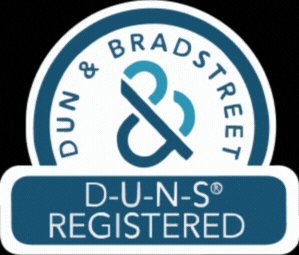Personalize user experience using Recommendations, Wishlist and Cart Abandonment emails

Einstein Analytics
Marketing Cloud
Retail & E-commerce
Overview
About the Client
The client, a leading multinational company, delivers premium eyewear with innovative designs that express individuality. They emphasize precision, exceptional quality, and meticulous craftsmanship. Renowned globally for their rimless eyewear, they also excel in half-rim, full-rim, and sunglasses. Their commitment to cutting-edge technology and fashion-forward aesthetics makes them a standout leader in the luxury eyewear industry.
The Challenge
- To personalize recommendations based on past behavior or to keep customers engaged by showing them products they are likely to be interested in.
- To personalize emails to offer tailored suggestions that are more relevant to individual customers’ interests, enhancing the likelihood of conversion.
- To recommend related, wish lists or complementary products, to drive additional sales and increase the average order value.
- To remind customers of their abandoned items and encourage them to complete the purchase, recovering potentially lost revenue.
Our Solution
- Leveraged Einstein Recommendations to provide AI-driven suggestions within our Salesforce instance.
- Established a set of rules for generating recommendations around categories and products in the Marketing Cloud.
- Using Salesforce Marketing Cloud’s Content Builder, created visually appealing email templates tailored to the business needs, and made them dynamic to enable personalized content.
- Developed a Journey Builder in Marketing Cloud to automate email journeys triggered by user behavior, with specific triggers determining when emails should be sent.
- For products on Wishlist, developed an automation on the Wishlist and scheduled automated emails through Salesforce and Marketing Cloud.
- Developed automations by integrating with the e-commerce platform to capture cart abandonment events to track when users leave items in their carts without completing the purchase.
- Established rules for identifying abandoned carts, such as items left in the cart for over a duration of specific hours.
- Using Salesforce Classic’s Email Template Builder, crafted cart abandonment emails with dynamic content blocks to display the specific items left in the cart.
- Utilized Marketing Cloud’s Journey Builder or Automation Studio to create an automated workflow that sends abandonment emails based on the defined criteria.
Technology & tools used
Commerce Cloud:
- Automation Flows: Used to catch events and trigger automation process.
Marketing Cloud:
- Einstein Email: Used to build personalized recommendations of any customer.
- Email Templates: Used to personalize content of the promotional emails.
- Journey Builder: To automate the process of sending promotions.
- Content Builder: To manage and build email contents appalling to user.
- Personalization Builder: Used to track user interaction with system and build insights.
Results
The Impact and outcome
- Increased Engagement: Personalizing email content with tailored product recommendations increases user engagement by showcasing relevant products, keeping customers interested and connected to your brand.
- Higher Conversion Rates: Personalizing cart abandonment emails with items the user left behind and offering incentives (e.g., discounts) significantly increased conversion rates, turning abandoned carts into completed purchases.
- Loyalty Building: Consistently delivering personalized content and timely reminders helped build customer loyalty and encouraged repeat purchases. A personalized approach fostered a stronger connection between the customer and the brand, enhancing long-term loyalty.
- Better Insights and Optimization: Analyzing the performance of personalized emails and notifications provided valuable insights into customer preferences and behavior, enabling continuous improvement and optimization of marketing strategies. Personalized approaches led to more effective marketing efforts, reducing wasted resources and improving overall campaign ROI.
- Enhanced Customer Experience: Using personalized recommendations, wish list alerts, and cart abandonment follow-ups created a more relevant and seamless shopping experience, leading to greater customer satisfaction.
- Boosted Sales and Revenue: Cross-Selling and Upselling: Personalized recommendations and wish list notifications drove additional sales by suggesting related or complementary products, increasing the average order value.
- Overall Impact: Personalizing user experiences in emails, wish list notifications, and cart abandonment follow-ups significantly boosted engagement and conversion rates. Tailoring content to user interests enhanced the customer experience, leading to increased sales and revenue by encouraging additional purchases and recovering lost sales. This approach also improved customer retention by building loyalty and providing valuable insights for optimizing marketing strategies. Overall, personalized interactions fostered a more relevant and satisfying shopping experience, driving better business outcomes.


